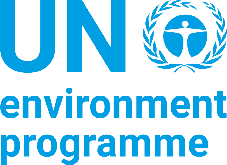Warsaw’s Mayor Rafał Trzaskowski has called air pollution “one of the largest problems Polish cities face”.
One of the main sources of air pollution in Warsaw are solid-fuel boilers, furnaces and stoves, so the city created an innovative and citizen-friendly program to subsidize their replacement with ‘clean’ sources of energy like heat pumps, electric heating or by connecting homes to the city’s heating or gas network. The program covers up to 100% of replacement costs. The subsidies may be combined with co-financing for renewable energy sources, such as photovoltaic installations, solar thermal collectors or wind turbines.
In February 2020 Mayor Trzaskowski banned the use of solid fuels for household heating. The regulation will come into force by the end of 2023. It is another city regulation aiming to Warsaw’s air quality and follows bans on the use of the most obsolete and least efficient stoves and furnaces in all of Mazowieckie Voivodship, the province in which Warsaw is located.
The city plans to replace all solid-fuel stoves and furnaces in city-owned buildings and replace them with environmentally friendly sources of energy by the end of 2022.
Warsaw is also working to improve its air quality monitoring system. By the end of 2020, there will be two new air quality monitoring reference stations to supplement an existing network of six stations. Over the next year, the installation of 170 air quality sensors will begin throughout the city and neighboring municipalities. Citizens will be able to access data from these monitors via a newly-created website and mobile apps.
There is also a push to rapidly transform the city’s transportation system by transitioning to electric mobility and by expanding the public railway network. This includes expanding a second metro line, increasing the number and quality of cycling routes, and increasing the bicycle share systems, which has over 900,000 users and electric bikes, bikes for children and tandem bikes.
The city is investing in new public transport vehicles and last year introduced 100 gas-powered buses and ordered 130 electric buses and 213 modern trams. All public tenders for public transport vehicles must meet the EURO 6 standard (European emission standards).
Citizens are encouraged to choose ecological means of transport through discounted public transport tickets, integrated regional tickets and by allowing privately owned electric vehicles to use bus lanes and park for free.
The municipal infrastructure is being redesigned to reduce energy consumption. This includes the modernization of city lighting by replacing light bulbs in street lamps with LED fixtures. Warsaw is also promoting electric mobility by developing charging infrastructure for public and private vehicles.
The city is becoming more pedestrian-friendly by removing obstacles like stairs and curbs, building ‘human-scale’ pedestrian crossings in locations where previously only underground crossings existed, reducing walking times between different means of transport, and by putting in place accessibility standards for people with limited mobility.
These activities are supported by media campaigns and educational activities. There are actions focused on children like ‘Cycling in May’, which promotes cycling to school and safety campaigns that target all citizens. The main goal is to encourage citizens to choose environmentally friendly transport and limit air pollution.
This story was submitted by the Air Protection and Climate Policy Office, Department of Air Quality and Education Monitoring in Warsaw. Non-UNEP stories highlighted here have been communicated to the United Nations Environment Programme (UNEP) by external partners in support of the International Day of Clean Air for blue skies and are shared here as a courtesy. UNEP is not responsible for the content. Inclusion here is not meant to be construed as an endorsement of the stories or the content therein.
